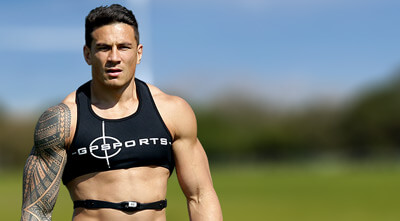Last month I travelled to Boston, USA with our coaches Johnny and Conor, to attend a weekend seminar at Cressey Performance.
Eric Cressey and his team are leaders in the field of athletic development, specialising in baseball, and in particular pitching. We took the trip to both learn, and grade ourselves against the best in the world.
I am going to share some takeaways that I hope can be of use to you in either your own athletic development, or that of your children.

Lesson 1: Measure sports performance, not just gym metrics.
Gym work has two goals:
1. Prevent Injury
2. Optimise Performance
Injury outcomes are simple to measure: are you fit and healthy to play? The best players in the world are useless if they can’t take to the field – think of Manu Tuilagi over the years, or Jack Wilshere, who had a Premier League leading 895 days out injured in six years! As an Arsenal fan that one wasn’t helpful….
To measure performance we look at gym metrics – how high can you jump? How much weight can you lift? What level do you achieve in the yo-yo shuttle run test? These measures are important indicators of progress and show training is moving forward. A simple example would be pull ups – if we test an athlete who can do a couple of pulls ups when they join us, we expect them to be able to perform ten within a few weeks – clear indication the athlete is stronger.
However expressing athleticism in the consistent environment of a gym is not the same as doing so in your actual sport. We need to keep our eyes on the goal: optimise athletic sports performance. As such, game specific performance measures should be taken. At Cressey performance, their interest was whether strength training translated into a faster pitch, much like a cricket bowl, measured in miles per hour. If you can bench press more than three months ago but your ball speed hasn’t increased, the program isn’t achieving the goal.
Taking this into our athletic development programs, we have purchased an SPT 2 GPS device, exactly like pro-athletes use across multiple sports, to track game data. The metrics we look at differs from sport to sport – for example in football total distance covered, and at what speed, is important. In rugby we have the additional consideration of tackle impact – how hard a player hits, and how that drops off through the game. The data is also position specific – how fast did a winger sprint, and how many times did they do so?
We have already started collecting data on our athletes and will be visiting as many matches as possible over the coming weeks to:
a) Establish their current performance metrics, and use them to inform our next stage of programming.
b) Give us a baseline to monitor if our programs are keeping the eyes on the goal.
b) Compare their data to the best athletes at their age in their sport.
It is an exciting addition to our toolkit and one that I believe will allow us to continue to create great results for our athletes. If you would like your game data tracking, drop me an email.
Joe
P.S. We currently have spaces in all Junior programs, both weekly and holiday camp. You can find out more and register here https://southernsport.co.uk/

